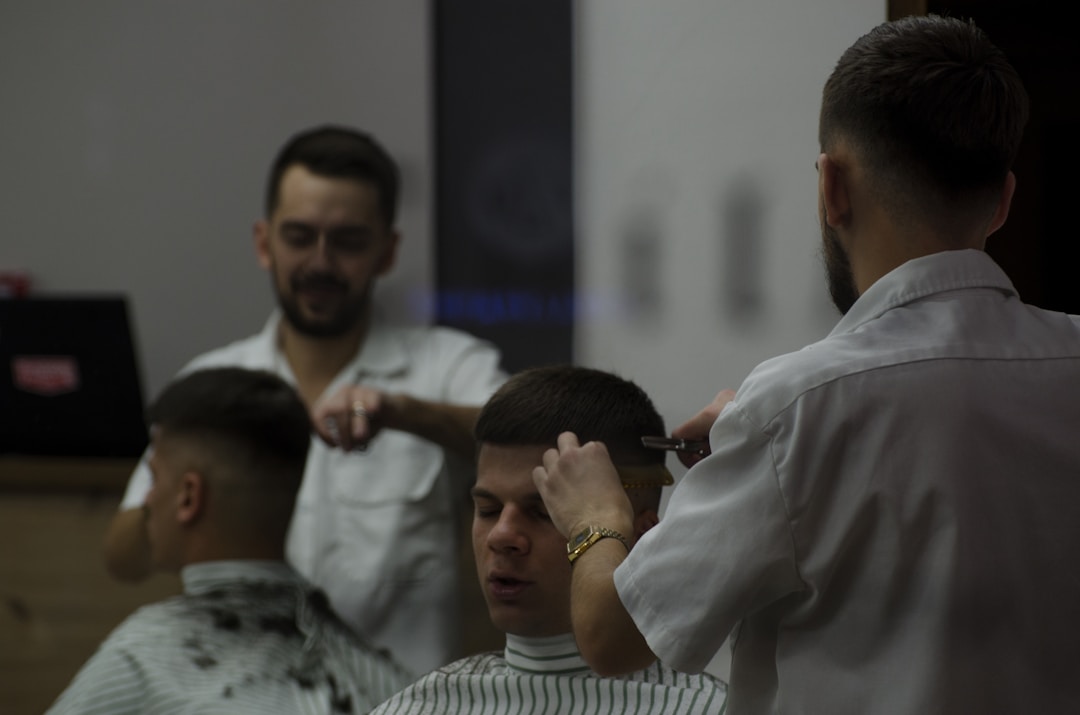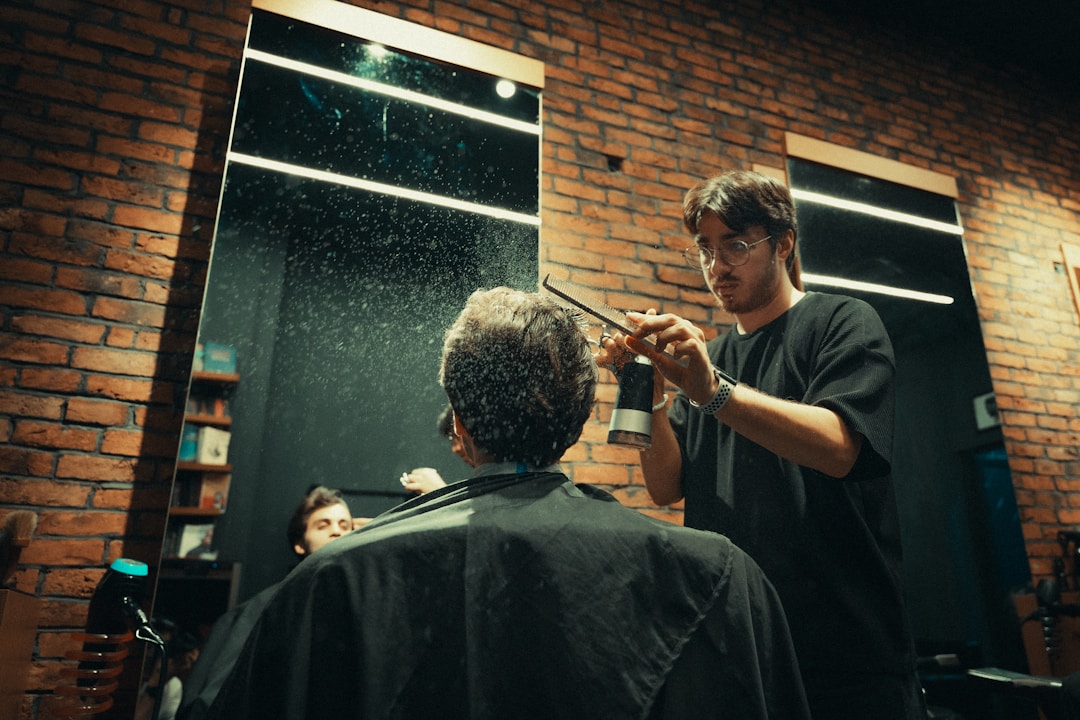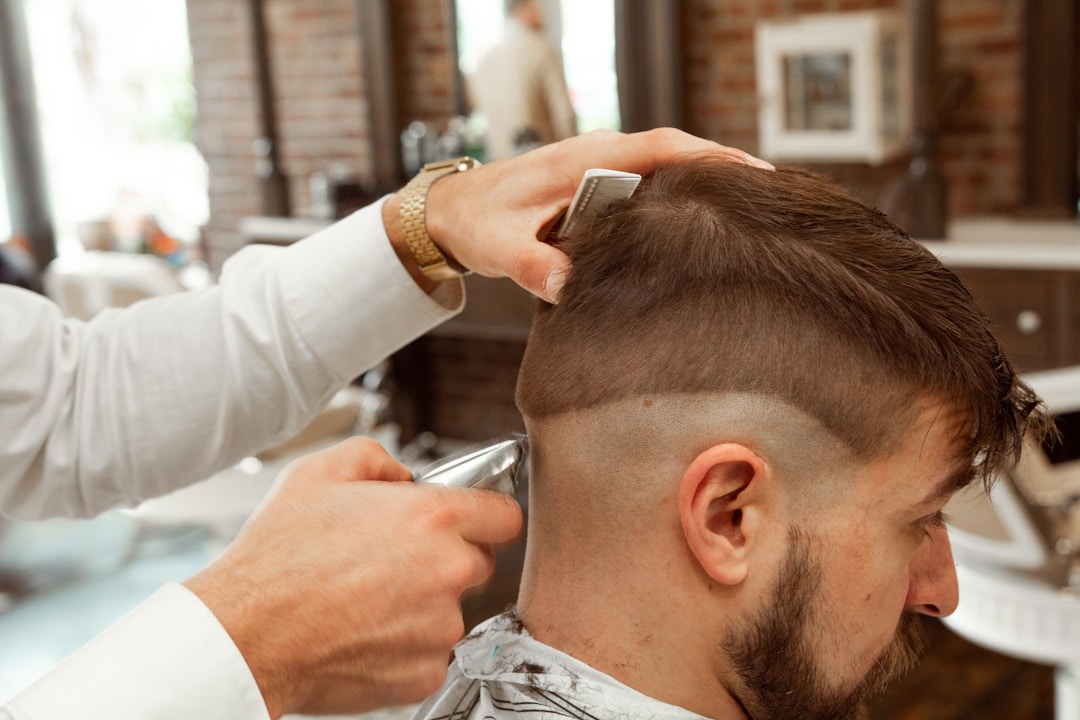Low Fade Haircut for Straight Hair Men: Complete Guide 2025
Master low fade haircuts for straight hair with specialized cutting techniques, styling methods, and product recommendations from Queens NYC professional barbers.

Men with straight hair have a significant advantage when it comes to low fade haircuts. The smooth, uniform texture of straight hair creates clean, defined fade lines that showcase the barber's technical skill beautifully. Without the complexity of curl patterns or wave formations, straight hair allows for precise, predictable cutting that produces consistently excellent results.
This complete guide covers everything men with straight hair need to know about low fade haircuts: specialized cutting techniques that maximize your hair's natural advantages, styling methods that create dimension and texture, product recommendations for versatile looks, and maintenance strategies to keep your fade sharp between appointments.
Why Straight Hair Works Perfectly with Low Fades
Straight hair possesses unique characteristics that make it ideally suited for low fade haircuts. Understanding these advantages helps you appreciate why this combination consistently delivers striking results.
1. Uniform Growth Pattern
Straight hair grows consistently in one direction, allowing for predictable cutting and precise fade gradients without worrying about curl variation or directional changes.
2. Clean Fade Lines
The smooth texture creates visually distinct fade transitions. Each clipper length shows clearly, making the gradient from skin to full length exceptionally defined.
3. Easy Maintenance
Straight hair requires minimal styling effort. The natural lay of the hair maintains the shape between washes and requires fewer products than textured or curly hair.
4. Styling Versatility
Straight hair can be manipulated easily - slicked back, brushed forward, parted, or textured - offering maximum styling flexibility with a low fade base.
5. Professional Appearance
The crisp, clean lines of a straight hair low fade project professionalism and attention to detail, making it ideal for corporate and formal environments.
6. Predictable Cutting
Barbers can execute precise techniques knowing straight hair will respond consistently, without unexpected curl activation or texture changes when cut shorter.
Professional Insight: While all hair types can achieve excellent low fades, straight hair offers the most consistent results with the least technical challenge. This reliability makes it the ideal canvas for fade haircuts, particularly for men new to fades or those who want minimal styling effort.
Best Low Fade Styles for Straight Hair Men
Straight hair's versatility allows for numerous low fade variations. These styles range from classic professional cuts to modern textured looks, each optimized for straight hair characteristics.
Classic Low Fade with Side Part
Best For: Professional environments, formal occasions, timeless aesthetic
Top Length: 2-4 inches | Styling Time: 5-7 minutes
This quintessential style combines a clean low fade with a defined side part. The smooth texture of straight hair allows for precise parting and easy styling with pomade or cream for a polished, sophisticated appearance.
Styling: Apply medium-hold pomade to damp hair, create side part with comb, brush hair to the side following natural direction, finish with light hairspray for hold.
Textured Crop with Low Fade
Best For: Modern casual style, younger professionals, creative environments
Top Length: 1.5-3 inches | Styling Time: 3-5 minutes
A contemporary take on the low fade featuring short, textured hair on top. Point cutting and layering add movement to straight hair, preventing the flat appearance that can occur with blunt cutting.
Styling: Apply matte paste or clay to dry or slightly damp hair, work through with fingers creating separation and texture, style forward or to the side for casual, effortless look.
Low Skin Fade with Slick Back
Best For: Formal events, evening occasions, bold style statements
Top Length: 3-5 inches | Styling Time: 5-8 minutes
This dramatic style pairs a skin-level low fade with longer hair on top slicked straight back. The contrast between clean-shaven sides and sleek top creates maximum visual impact, perfect for straight hair's smooth texture.
Styling: Apply high-shine pomade to damp hair, comb back from forehead to crown in smooth motion, use blow dryer on low heat to set style, finish with additional pomade for lasting shine.
Low Taper Fade with Fringe
Best For: Youth appeal, trendy aesthetic, face shape modification
Top Length: 2-4 inches (longer in front) | Styling Time: 4-6 minutes
A modern style featuring a gradual low taper fade with longer hair brushed forward into a fringe. Straight hair creates clean, defined fringe edges that frame the face effectively.
Styling: Apply styling cream to damp hair, blow-dry forward while brushing hair toward forehead, use matte paste for texture and separation in fringe, leave natural or add slight wave with hands.
Caesar Cut with Low Fade
Best For: Receding hairlines, minimal maintenance, athletic appearance
Top Length: 1-2 inches | Styling Time: 2-3 minutes
This low-maintenance style combines a short, horizontally-cut top with a low fade. Straight hair lays flat naturally, creating the classic Caesar aesthetic without requiring extensive styling.
Styling: Apply small amount of light pomade or styling cream to damp hair, brush forward with natural direction, let air dry or use blow dryer briefly. Minimal product and effort required.
Specialized Cutting Techniques for Straight Hair Low Fades

While straight hair is technically easier to cut than curly or wavy hair, achieving an exceptional low fade requires specific techniques that maximize the hair's natural advantages while avoiding common pitfalls.
Precision Guideline Establishment
The Foundation of Straight Hair Fades
Because straight hair shows every imperfection clearly, establishing a precise guideline is important. Barbers create a clean horizontal reference point that defines where the fade begins, ensuring consistent height and uniform appearance around the entire head.
- Measurement Consistency: Use exact measurements (typically 1-2 inches above ear) for guideline placement
- Level Verification: Check guideline from multiple angles to ensure perfect horizontal alignment
- Clean Execution: Create sharp, defined guideline that will serve as the foundation for the entire fade
Graduated Clipper Work
Creating Seamless Transitions
Straight hair requires meticulous clipper guard progression to achieve smooth gradient transitions. Each guard length must blend perfectly into the next, taking advantage of straight hair's uniform growth pattern.
Standard Guard Progression for Straight Hair:
- Base Layer: #0.5 or #1 at the bottom (skin to 1/8 inch)
- First Transition: #1.5 or #2 (extending 1 inch above base)
- Mid Fade: #2.5 or #3 (blending to guideline area)
- Top Blend: #3.5 or #4 (connecting to longer top hair)
- Final Blend: Scissor-over-comb technique for seamless connection
Detail Work and Finishing
Maximizing Straight Hair's Natural Sharpness
The final phase involves precise detailing that leverages straight hair's ability to hold clean lines. This includes sharp hairline definition, sideburn shaping, and neckline cleanup that showcases the fade's precision.
Hairline Refinement
Use detail trimmers or straight razors to create crisp hairline edges. Straight hair's uniform texture allows for extremely sharp definition that holds longer than textured hair.
Blend Zone Perfection
Use open clipper blade techniques in the blend zone to eliminate any visible lines. Straight hair shows imperfections clearly, so extra attention here is essential.
Multiple Angle Inspection
Check the fade from front, back, and both sides under good lighting. Straight hair's clarity makes spotting inconsistencies easy when viewed from multiple perspectives.
Products and Styling Techniques for Straight Hair Low Fades
Straight hair responds well to a wide range of styling products, but choosing the right ones depends on your desired look and hair characteristics. The key is enhancing texture and volume without weighing down your naturally smooth hair.
| Desired Style | Product Type | Application |
|---|---|---|
| Textured Matte Look | Matte Clay or Paste | Dry/slightly damp hair |
| Slicked Back/Side | Medium-Hold Pomade | Damp hair |
| Natural Movement | Light Styling Cream | Damp hair |
| Volume & Texture | Sea Salt Spray | Damp hair (blow-dry) |
| Root Lift | Volumizing Powder | Dry hair at roots |
| High Shine Formal | High-Shine Pomade | Damp hair |
Daily Styling Routine for Straight Hair
Morning Routine (5-7 minutes)
- Wash or dampen hair with water (full shampoo 3-4x per week, water rinse other days)
- Apply pre-styler if using (sea salt spray for texture, volumizing mousse for lift)
- Blow-dry strategically if time allows - use medium heat and direct airflow opposite to desired final direction for volume
- Apply styling product appropriate for your desired look (see product table above)
- Style with hands or comb depending on look - fingers for texture, comb for sleekness
- Final touches with detail work around hairline and fade edges if needed
- Set with hairspray (optional, for all-day hold in formal situations)
Pro Tips for Preventing Flat Straight Hair
- Blow-Dry Technique: Dry hair in opposite direction of natural fall, then style into place. This creates lift at the roots.
- Product Placement: Avoid applying products directly to roots, which can weigh hair down. Focus mid-shaft to ends.
- Texture Creation: Use matte products and work through hair with fingers to create separation and dimension.
- Strategic Length: Keep 2+ inches on top for movement. Hair shorter than 1.5 inches will lay flat regardless of products.
- Styling Direction: Style hair slightly to the side or with forward movement rather than straight back for natural volume.
Maintenance Schedule for Straight Hair Low Fades

Straight hair's uniform growth pattern means your low fade will grow out evenly but visibly. The clean lines that make the haircut look so sharp when fresh also mean any growth becomes noticeable quickly. Consistent maintenance is essential for keeping your fade looking intentional rather than overgrown.
| Timeframe | Maintenance Task | Location |
|---|---|---|
| Daily | Styling routine, product application | Home |
| Every 3-4 Days | Shampoo and conditioning (other days water rinse) | Home |
| Every 2 Weeks | Professional fade refresh, hairline cleanup | Barber |
| Every 3 Weeks | Full haircut with fade refresh (if extending time) | Barber |
| Every 4-6 Weeks | Complete cut with top length adjustment | Barber |
Professional Recommendation: Most straight hair low fade clients schedule appointments every 2-3 weeks. This frequency maintains the sharp, clean aesthetic that makes the style impactful. Waiting longer than 3 weeks typically results in visible fade degradation and loss of the defined lines that characterize a fresh cut.
Common Mistakes with Straight Hair Low Fades
❌ Using Heavy Products
The Problem: Heavy waxes, thick pomades, or too much product can make straight hair look greasy, flat, and weighed down.
Solution: Use lightweight, water-based products. Start with less product than you think you need - you can always add more.
❌ Waiting Too Long Between Cuts
The Problem: Straight hair's uniform growth makes fade degradation obvious. Waiting 4+ weeks results in visible lines and lost fade definition.
Solution: Schedule appointments every 2-3 weeks. Set recurring appointments to maintain consistency.
❌ Neglecting Blow-Drying
The Problem: Air-drying straight hair often results in flat, lifeless appearance without volume or dimension.
Solution: Spend 3-5 minutes blow-drying strategically. Use medium heat and direct airflow to create lift and movement.
❌ Over-Washing Hair
The Problem: Daily shampooing strips natural oils, making straight hair dry, brittle, and harder to style effectively.
Solution: Shampoo 3-4 times per week maximum. Use water rinses on other days to refresh style without over-cleansing.
Related Low Fade Resources
Frequently Asked Questions
Get Your Perfect Straight Hair Low Fade
Visit DIDA Hair Studio in Queens, NYC for expert low fade haircuts optimized for straight hair. Our experienced barbers specialize in precision cutting techniques that maximize your hair's natural advantages for consistently excellent results.